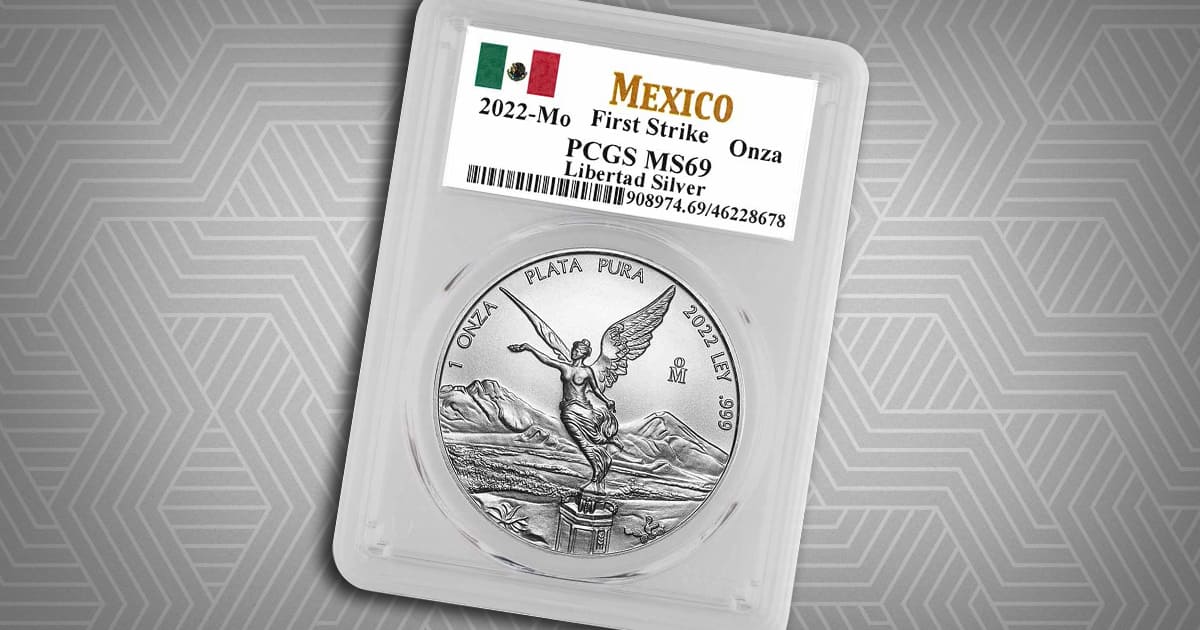
Mint State 69 is Used for Nearly Perfect Coins
When a coin receives an MS-69 grade, it is almost in a perfect mint state, but one or two detracting features keep it from the MS-70 grade.
What is the difference between MS-69 and MS-70?
A grade of MS-70 is the highest score a coin can receive and indicates perfection in regard to blemishes, strikes, and luster. Meanwhile, an MS-69 rating is near-perfect but has identifiable disfiguring, like a hairline scratch. For instance, in the above image, the silver Libertad might have only a small hairline that prevents it from reaching an MS-70 grade.
An MS-70 coin will typically be priced much higher than an identical coin with an MS-69 grade. Some collectors may prefer to purchase lower grade coins and let their numismatic collection appreciate as their coins become more scarce.
How do coin grading organizations define MS-69?
PCGS describes coins in this grade as “Virtually fully struck with minuscule imperfections visible upon close inspection.”
NGC states that an MS-69 coin is “A fully struck coin with nearly imperceptible imperfections.”
One thing the grading scale does not consider is the relative scarcity of the coin to be graded. This factor can determine the value of your coin as much as the grade can. If your coin did not receive an MS-70 grade, this is not the final verdict on how much it is worth.





